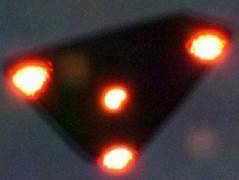The incidents interrupted Exercise Mainbrace, a massive set of NATO war-game maneuvers.
In late September 1952, only months after a rash of “flying saucer” sightings over Washington, D.C. made headlines around the world, dozens of military officers participating in NATO exercises in the North Atlantic were struck by their own UFO fever.
Exercise Mainbrace was the largest peacetime military exercise since World War II. The war-game-style maneuvers simulated NATO’s response to a mock attack on Europe, presumably by the Soviet Union. The Mainbrace operation involved 200 ships, 1,000 planes and 80,000 soldiers from multiple NATO countries—including large deployments from the United States and the United Kingdom.
In a year dominated by news reports of UFO sightings, Pentagon officials half-joked with Naval Intelligence that they should keep an eye out for aliens during the NATO exercises, said Edward Ruppelt, the U.S. Air Force captain in charge of the top-secret Project Blue Book UFO investigations.
As it turns out, they weren’t off base. “[N]o one really expected the UFOs to show up,” Ruppelt wrote in his 1956 book, The Report on Unidentified Flying Objects. “Nevertheless, once again the UFOs were their old unpredictable selves—they were there.”
Not a weather balloon

The USS Franklin D. Roosevelt, where one of the Mainbrace sightings was made.
The first Mainbrace encounter came on September 13 when the captain and crew of a Danish destroyer spotted a triangular-shaped object moving through the night sky at alarming speeds. The unidentified craft emitted a blue glow and was estimated by Lieutenant Commander Schmidt Jensen to be traveling upward of 900 miles per hour.
On September 20, an American newspaper reporter named Wallace Litwin was aboard the USS Franklin D. Roosevelt, an aircraft carrier participating in the Mainbrace exercises, when he saw a commotion on deck: several pilots and flight-crew members pointing at a silver sphere in the sky that appeared to be following the fleet. Litwin quickly shot four color photos of the round object, which he assumed was a weather balloon.
In a letter to a UFO investigator years later, Litwin recounts that he went below deck and joked with fellow newspaper correspondents that he had just “shot a flying saucer.” This caught the attention of the ship’s executive officer, who informed Litwin that no weather balloons had been released that day. The officer then radioed the Midway, the only other ship in the vicinity, which also confirmed that no weather balloons were in the air or unaccounted for.
Read More – The UFO Sightings that Pushed the UK to Take ‘Flying Saucers’ More Seriously


Leave a Reply